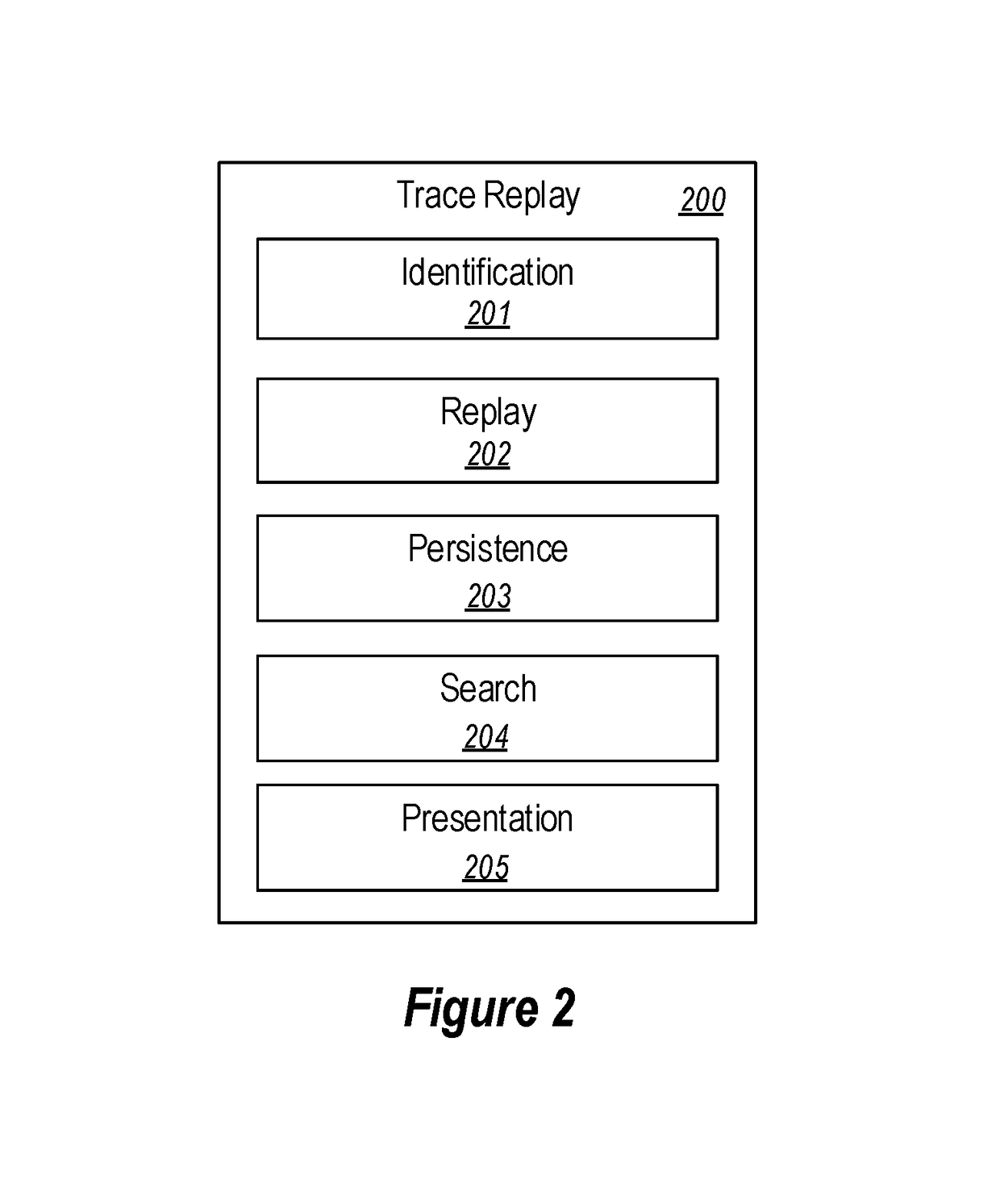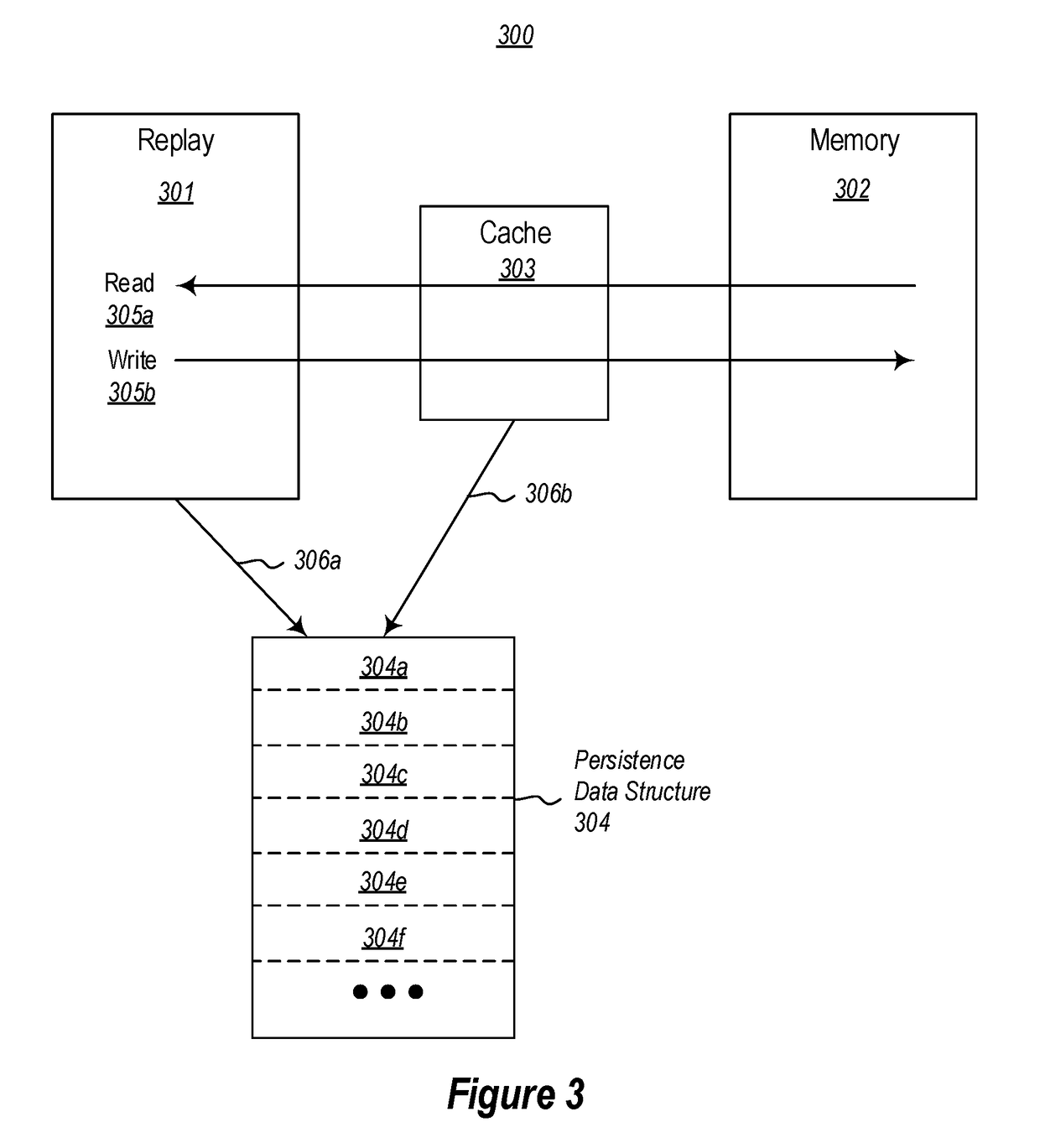Efficient retrieval of memory values during trace replay
a memory value and replay technology, applied in error detection/correction, input/output to record carriers, instruments, etc., can solve the problems of prohibitively large amount of data, occupying a significant portion of application development time for tracking down runtime errors to pinpoint code bugs, and developers often spend a significant amount of time “debugging” the cod
- Summary
- Abstract
- Description
- Claims
- Application Information
AI Technical Summary
Benefits of technology
Problems solved by technology
Method used
Image
Examples
Embodiment Construction
[0019]At least some embodiments described herein preserve memory values during trace replay by maintaining plurality of persistence data structures during trace replay. Each persistence data structure corresponds to a different trace section of a trace, and stores the most recently seen value for each memory address encountered by that trace section. At least some embodiments herein also use the persistence data structures to return a memory value during trace replay. In these embodiments, returning a memory value involves progressively searching these persistence data structures—starting at the point of time of the requested memory value and going backwards until a persistence data structure storing the memory address of the requested memory value is encountered.
[0020]To the accomplishment of the foregoing, FIG. 1 illustrates an example computing environment 100 that facilitates preserving memory values during replay of trace files, and efficient retrieval of those memory values. A...
PUM
 Login to View More
Login to View More Abstract
Description
Claims
Application Information
 Login to View More
Login to View More - R&D
- Intellectual Property
- Life Sciences
- Materials
- Tech Scout
- Unparalleled Data Quality
- Higher Quality Content
- 60% Fewer Hallucinations
Browse by: Latest US Patents, China's latest patents, Technical Efficacy Thesaurus, Application Domain, Technology Topic, Popular Technical Reports.
© 2025 PatSnap. All rights reserved.Legal|Privacy policy|Modern Slavery Act Transparency Statement|Sitemap|About US| Contact US: help@patsnap.com



